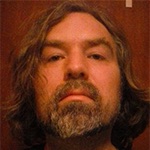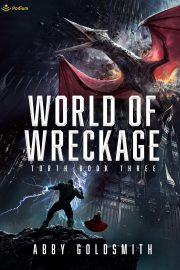Sketching a Story
by Paul Jessup
 Novels are hard, yo. I mean, books in general, maybe writing overall? But for me making that leap from short stories to novels was a difficult transition. I had to completely change my writerly habits, completely reinvent the ways I was doing things altogether. Remember that old saw, about cutting your teeth on short stories first, then going to novels? That’s kind of funny, when you think about it. The two are completely different art forms. I’ve always been of the frame of mind that you write short stories because you love them, and that’s it.
Novels are hard, yo. I mean, books in general, maybe writing overall? But for me making that leap from short stories to novels was a difficult transition. I had to completely change my writerly habits, completely reinvent the ways I was doing things altogether. Remember that old saw, about cutting your teeth on short stories first, then going to novels? That’s kind of funny, when you think about it. The two are completely different art forms. I’ve always been of the frame of mind that you write short stories because you love them, and that’s it.
And that’s what I did for a long time. But I also love novels, and want to write some big meaty sink yourself down into the world and live in it for awhile books. And figuring that whole thing out was an experience in itself. One of the habits I picked up when making the switch was what I call sketch writing.
It’s kind of like how an artist sketches a picture first. They draw the rough outline, try different poses, different ways the light could hit things. It’s an idea, in its most distilled and basic form, but it’s not the final work of art. Sketch writing, to me, is a similar idea. It’s not the same as outlining, per se, though there is a bit of overlap, for certain.
No, sketch writing is what I do as I’m writing along and I’m stuck on a certain area. I don’t really outline, not even the basic beats. I try and get a bunch of notes before writing and ideas, but I don’t stick to them. I just take notes and research ideas until I get a really potent image in my head that needs to be written, and then I go on in, writing.
And a habit I noticed is that at certain key points of the story I start sketching for a bit. It’s writing, but it’s all omniscient third-person overview. Time passes, this happens and this happens and then this happens. It’s written in a very brief, quick manner, but I still picture all of it running by in my mind. Snatches of conversation, bits of interludes and everything else. It’s deeper than an outline, a little closer to the bone, and it happens when I’m just writing along, and it feels like I need to do a sketch for the next few scenes, so I sketch it out.
And then I can go in later and dig in deeper. Pull into the close third person, take in all that sketch work and then either use it or not. Sometimes I just use the start of it and go from there, other times the whole thing just plays out as I’d planned, though closer to the bone and right up close and personal. It takes a bit longer to write like this, for certain. But it feels like a holdover from short story writing, since these sketches are like little short stories involving the characters and the plot of the novel I’m working on.
It’s probably not a technique I would suggest everyone run out and use right now, but for other short story writers making that novelish leap, it might just help you as much as it’s helped me.
•••
Paul Jessup is a critically acclaimed/award-winning author of strange and slippery fiction. His novel Close Your Eyes is currently out from the Apex Book Company. You can visit him at pauljessup.com or on Twitter at @pauljessup.


